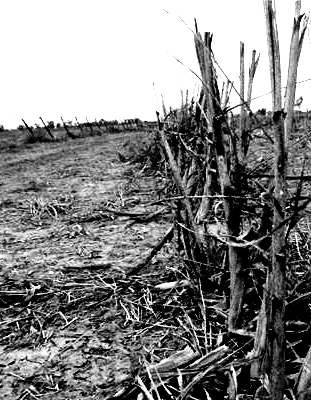Dire claims of dry times need response soon
 NASA says the Earth is running out of water, and it will require a worldwide shift in thinking to recover.
NASA says the Earth is running out of water, and it will require a worldwide shift in thinking to recover.
More than a quarter of the world’s population relies on groundwater as its primary source, putting the precious and often-unseen supply in serious risk.
In agricultural regions especially, groundwater resources are being pushed to the brink, warns NASA Jet Propulsion Laboratory hydrologist James Famiglietti.
In an article for science journal Nature Climate Change, Famiglietti writes:
“In many parts of the world, in particular in the dry, mid-latitudes, far more water is used than is available on an annual, renewable basis.
“Precipitation, snowmelt, and streamflow are no longer enough to supply the multiple, competing demands for society’s water needs. Because the gap between supply and demand is routinely bridged with non-renewable groundwater, even more so during drought, groundwater supplies in some major aquifers will be depleted in a matter of decades.
“The myth of limitless water and the free-for-all mentality that has pervaded groundwater use must now come to an end,” he urged.
Data collected by the Gravity Recovery and Climate Experiment (presented in this table) shows a clear decline in the world’s most-used aquifers, including the North China Plain, Australia’s Canning Basin, the Northwest Sahara Aquifer System, the Guarani Aquifer in South America, the High Plains and Central Valley aquifers in the US, and the water tables beneath northwestern India and the Middle East.
Famiglietti says the first step to managing the growing groundwater problem is to accept that it exists.
Then, the expert says, societies should look at agriculture as the key user.
“Agriculture accounts for nearly 80 per cent of water use globally, and at least half of the irrigation water used is groundwater,” he wrote. “Even modest gains in agricultural efficiency will result in tremendous volumes of groundwater saved, or of water available for the environment or other human uses such as municipalities, energy production, industry and economic growth.”
Famiglietti explains the issue further in a TEDx talk about groundwater losses, embedded below.








 Print
Print